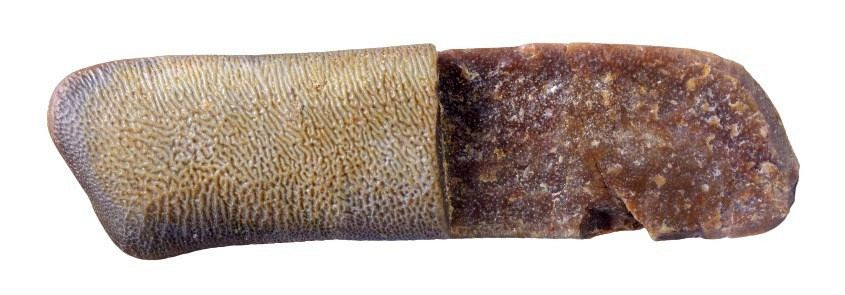Strophodus indicus
Sharma & Singh, 2021
Classification: Elasmobranchii Hybodontiformes Acrodontidae
Reference of the original description
A small assemblage of marine hybodont sharks from the Bathonian of the Jaisalmer Basin, India. Neues Jahrbuch für Geologie und Paläontologie, Abhandlungen, 301(3), 317–333
A small assemblage of marine hybodont sharks from the Bathonian of the Jaisalmer Basin, India. Neues Jahrbuch für Geologie und Paläontologie, Abhandlungen, 301(3), 317–333
Description:
Citation: Strophodus indicus Sharma & Singh, 2021: In: Database of fossil elasmobranch teeth www.shark-references.com, World Wide Web electronic publication, Version 12/2025
Please send your images of "Strophodus indicus" to info@shark-references.com

Strophodus indicus Sharma & Singh, 2021 © Archana Sharma, India

Strophodus indicus Sharma & Singh, 2021 © Archana Sharma, India
Description
Original diagnosis after Sharma & Singh (2021) p. 322 [30027]: Strophodus indicus sp. nov., with characteristic crushing type dentition, is unique with the following dental characters: (1) The crown is flat with flat base. (2) Crown is elongated and narrower with mesio- distal length of 52 mm and labio- lingual width of 14 mm. (3) The occlusal ornamentation of the teeth is composed of prominent enameloid folds forming ridge and groove structure. (4) The ornamentation changes into a minutely reticulate pattern towards the crown edges. (5) Enameloid folds on the lingual edge of the crown have an appearance of pleated beads. (6) The root is flat, proportionate in size to crown. (7) The root is not projected and cannot be seen from occlusal view. (8) The root looks almost boat shaped in labio- lingual view.
Original diagnosis after Sharma & Singh (2021) p. 322 [30027]: Strophodus indicus sp. nov., with characteristic crushing type dentition, is unique with the following dental characters: (1) The crown is flat with flat base. (2) Crown is elongated and narrower with mesio- distal length of 52 mm and labio- lingual width of 14 mm. (3) The occlusal ornamentation of the teeth is composed of prominent enameloid folds forming ridge and groove structure. (4) The ornamentation changes into a minutely reticulate pattern towards the crown edges. (5) Enameloid folds on the lingual edge of the crown have an appearance of pleated beads. (6) The root is flat, proportionate in size to crown. (7) The root is not projected and cannot be seen from occlusal view. (8) The root looks almost boat shaped in labio- lingual view.
Remarks
shark-references Species-ID=16161;
valid afterSharma & Singh, 2021, p. 322 [30027];
type species of Moskovirhynchus Popov & Shapovalov, 2021 p. 412 [30016] by original designation (Art. 68.2 ICZN);
shark-references Species-ID=16161;
valid afterSharma & Singh, 2021, p. 322 [30027];
type species of Moskovirhynchus Popov & Shapovalov, 2021 p. 412 [30016] by original designation (Art. 68.2 ICZN);
References

An assemblage of Middle Jurassic hybodonts from Jaisalmer Basin, western India. Historical Biology, 37(9), 2055–2064
DOI: 10.1080/08912963.2024.2412131

A small assemblage of marine hybodont sharks from the Bathonian of the Jaisalmer Basin, India. Neues Jahrbuch für Geologie und Paläontologie, Abhandlungen, 301(3), 317–333
DOI: 10.1127/njgpa/2021/1014

An assemblage of Middle Jurassic hybodonts from Jaisalmer Basin, western India. Historical Biology, 37(9), 2055–2064
DOI: 10.1080/08912963.2024.2412131

A small assemblage of marine hybodont sharks from the Bathonian of the Jaisalmer Basin, India. Neues Jahrbuch für Geologie und Paläontologie, Abhandlungen, 301(3), 317–333
DOI: 10.1127/njgpa/2021/1014

















